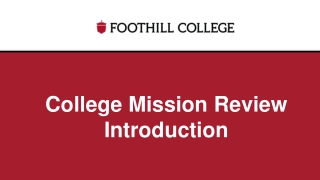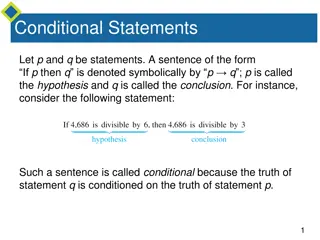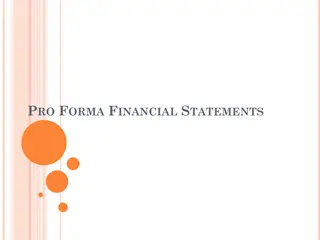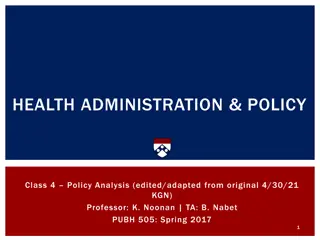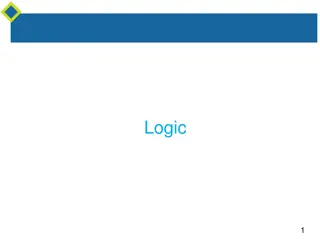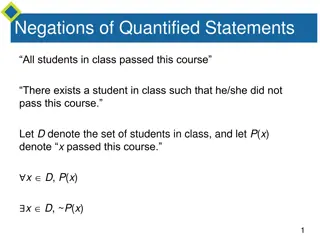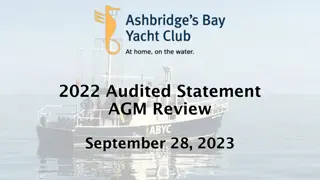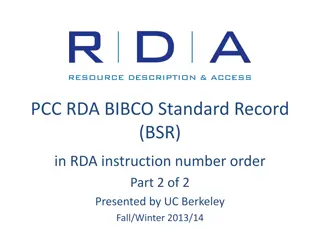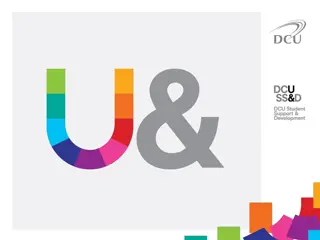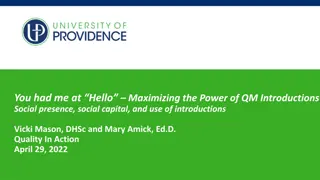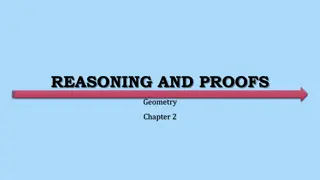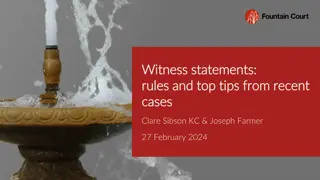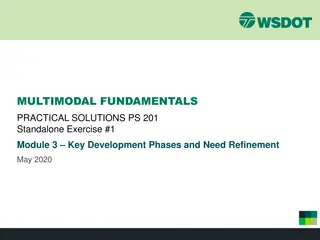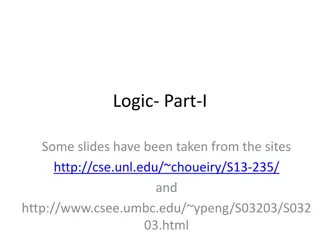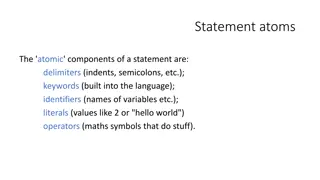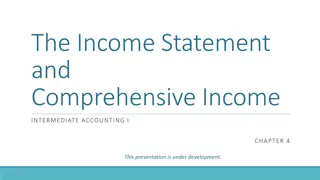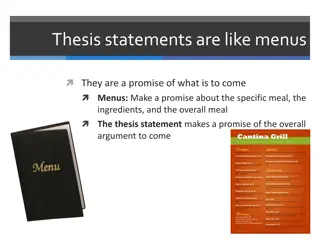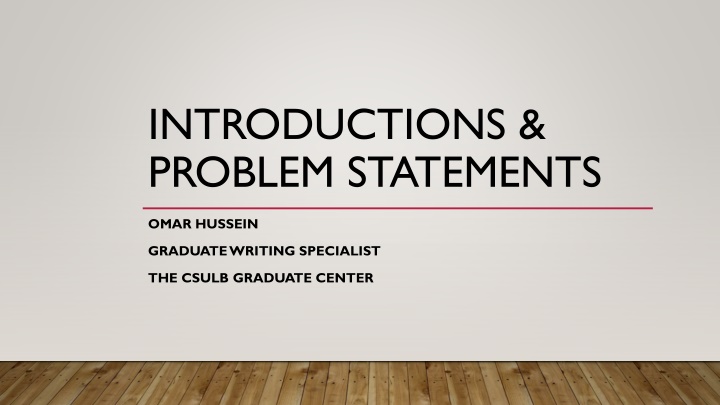
Crafting Effective Introductions: Engaging Readers and Addressing Problems
Learn how to create impactful introductions for your academic writing, addressing problems and engaging readers effectively. Understand the importance of considering the reader's perspective and structuring your introduction to provide value and solutions. Dive into the essential elements of introductions, including setting common ground, presenting problems, and offering responses to captivate your audience.
Download Presentation

Please find below an Image/Link to download the presentation.
The content on the website is provided AS IS for your information and personal use only. It may not be sold, licensed, or shared on other websites without obtaining consent from the author. If you encounter any issues during the download, it is possible that the publisher has removed the file from their server.
You are allowed to download the files provided on this website for personal or commercial use, subject to the condition that they are used lawfully. All files are the property of their respective owners.
The content on the website is provided AS IS for your information and personal use only. It may not be sold, licensed, or shared on other websites without obtaining consent from the author.
E N D
Presentation Transcript
INTRODUCTIONS & PROBLEM STATEMENTS OMAR HUSSEIN GRADUATE WRITING SPECIALIST THE CSULB GRADUATE CENTER
PRELIMINARIES Once you think you have a draft that works, you re ready to write your final introduction Some writers think that means following the standard advice: Grab their attention with something snappy or cute. That s not useless advice, but those who read research reports want more than cute and snappy. What seizes their attention is a problem they think needs a solution, and what holds it is a promise that you ve found it [Y]ou can always work with readers who say, I don t agree. What you can t survive are those who shrug and say, I don t care.. Booth, Colomb, & Williams (2008), The Craft of Research, 3rded. The following slides borrow and steal shamelessly from The Craft of Research and other related works by Joseph Williams and company. I note the sources (as I m doing here) but I don t always use proper citation.
PRELIMINARIES (CONTINUED) Introductions (which generally include problem statements) inform readers what the paper is going to do for them (and why they should keep reading). In other words, introductions are a statement of value: they explain to the reader how the paper is going to offer value to them. How do papers offer value? By trying to change the reader s mind in some way, usually by answering a question or responding to a problem.
THINKING ABOUT THE READER For any piece of writing, you should always be thinking about the reader. Who is the reader? What does the reader want to know? (i.e., why is the reader reading my paper?) Don t think of the reader as your professor (even if your professor is the only person who s actually going to read the paper). Thinking this way is a mistake. Instead, picture an idealized or imaginary reader. For college and grad school, a good imaginary reader might be a classmate of yours (a peer) who shares with you a knowledge of the basic ideas of the field but doesn t know anything about your specific paper topic.
THINKING ABOUT THE READER (CONTINUED) As Booth, Colomb, and Williams (BCW) put it (regarding introductions to class papers): When you draft your introduction, imagine you are writing to someone who has read some of the same sources as you and is generally interested in the same issues, but does not know what specifically happened in your class (p. 237).
THE COMMON STRUCTURE OF INTRODUCTIONS To ensure that they are friendly to readers, almost all introductions should have these 3 parts: 1. A common ground (that establishes a context and background) 2. A problem (that disrupts the common ground) 3. A response to the problem (that says what your paper is going to do about this problem) One way to think of these parts is as follows: (1) Research has shown (2) However, (3) Therefore, this paper will
EXAMPLE Research has shown that public health education campaigns can be highly effective at improving healthy behaviors among the general public. For example, a 2015 study by Harvard University demonstrated that a decades-long campaign of public service announcements has helped reduce the rate of smoking in the general public by as much as 50%. In addition, Johnson et al. (2019) found that social media campaigns about the dangers of e-cigarettes significantly reduced the rates of e-cigarette use among high schoolers. [Common Ground] However, insufficient scholarly attention has been given to the role that popular culture can play in improving these health education campaigns. Some studies have examined the effectiveness of celebrity spokespeople in increasing a public health campaigns broad appeal (e.g., Cosgrove, 2011; Draper, 2017 ). Yet few studies have looked at the role of popular culture more broadly, including the use of popular music and the integration of other popular media (e.g., video games) to increase the reach and effectiveness of these campaigns. [Problem] Therefore, this paper examines an innovative new multimedia anti-smoking campaign that targets the younger demographic by incorporating multiple elements of popular culture. The goal is to assess the effectiveness of this campaign and determine what lessons can be learned for improving such campaigns in general. [Response]
COMMON GROUND Here s a somewhat silly example that BCW use to show how a common ground works to set up a problem: One sunny morning Little Red Riding Hood was skipping through the forest on her way to Grandmother s house. [common ground that establishes a stable context] . . when suddenly the Big Bad Wolf jumped out from behind a tree [disrupting condition that introduces the problem] The rest of the story elaborates the problem and then shows how it is resolved.
COMMON GROUND (CONTINUED) Here s a more academic example (also from BCW): As we have investigated environmental threats, our understanding of chemical processes in acid rain and the buildup of carbon dioxide has improved, allowing us to understand better their effects on the biosphere. [common ground] But recently the processes that thin the ozone layer have been found to be less well understood than once thought. [destabilizing condition: problem] We may have labeled hydro- fluorocarbons as the chief cause incorrectly. [consequence]
COMMON GROUND (CONTINUED) Note that you can eliminate the common ground and just start with the problem if you can be pretty sure that the reader (or audience) is well-informed and doesn t need the problem contextualized: Recently the chemical processes that thin the ozone layer have been found to be less well understood than once thought. We may have labeled hydrofluorocarbons as the chief cause incorrectly. This might make sense, for example, if you were presenting this paper at a scientific conference. But when in doubt, provide the context (i.e., common ground).
COMMON GROUND (CONTINUED) As BCW state, a common ground can: Describe a misunderstanding: The Crusades are widely believed to have been motivated by religious zeal to restore the Holy Land to Christendom. [common ground] In fact, the motives were at least partly, if not largely, political . Survey flawed research: Few sociological concepts have fallen out of favor as fast as Catholicism s alleged protective influence against suicide. Once one of sociology s basic beliefs, it has been called into question by a series of studies in both Europe and North America [common ground] However, certain studies still find an effect of religion
COMMON GROUND (CONTINUED) Point to a misunderstanding about the problem itself: American education has focused on teaching children to think critically, to ask questions and test answers. [common ground] But the field of critical thinking has been taken over by fads and special interests Notice how skipping the common ground can make a paper hard to follow and make it hard to identify the specific problem that the paper is tackling: In view of Hofstadter s failure to respect the differences among math, music, and art, it is not surprising that the response to The Embodied Mind would be stormy. It is less clear what caused the controversy. I will argue that any account of the human mind must be interdisciplinary. . . .
PROBLEM Once you establish common ground, disrupt it with a problem (BCW). Problems usually have these two parts: 1. a condition of incomplete knowledge or understanding (i.e., something we need to know more about) 2. the consequences of that condition, which can be a more significant gap in understanding, or the cost of ignoring this gap, or the benefit of closing this gap. In other words, you first state what it is that we don t know or understand (1 above). Then you imagine the reader asking, so what? And then you answer this hypothetical so what? with a consequence (i.e., a cost or benefit, as in 2 above).
PROBLEM (CONTINUED) Here s an example (BCW): Common ground: Motodyne Computers plans to redesign the user interface. . . . Motodyne has three years experience with its current icon set . . . Problem: but it has no data showing which icons are self explanatory. [disrupt the common ground with a condition of incomplete knowledge]. But the reader might ask, So what? So, you add: Lacking such data, we cannot determine which icons to redesign. [consequence of ignoring the incomplete knowledge] Or With such data, we could determine which icons to redesign. [benefit of resolving the incomplete knowledge]
PROBLEM (CONTINUED) Depending on both your reader and the subject, you don t always have to include the costs or benefits (because they might be so obvious that they don t need to be stated). For example, BCW mention the famous paper by Watson and Crick explaining their double helix model for DNA: Crick and Watson did not specify either the consequences or benefits of knowing the structure of DNA, because every biologist knew that to understand genetics, they first had to understand the structure of DNA. Had Crick and Watson spelled out those consequences, they might have seemed both redundant and condescending. (p. 241)
PROBLEM (CONTINUED) Note also that practical/applied topics have practical consequences. Theoretical topics have theoretical consequences. The example below from BCW offers practical consequences (in bold): Last year the River City Supervisors agreed that River City should add the Bayside development to its tax base. Their plan, however, was based on little economic analysis. If the Board votes to annex Bayside without understanding what it will cost the city, the Board risks worsening River City s already shaky fiscal situation. When the burden of bringing sewer and water service up to city code are included in the analysis, the annexation will cost more than the Board assumes.
PROBLEM (CONTINUED) And this example (also from BCW) offers a theoretical benefit of increasing our knowledge (in bold): Since 1972 American cities have annexed upscale neighborhoods to prop up tax bases, often bringing disappointing economic benefits. But those results could have been predicted had they done basic economic analysis. The annexation movement is a case study of how political decisions at the local level fail to use expert information. What is puzzling is why cities do not seek out that expertise. If we can discover why cities fail to rely on basic economic analyses, we might better understand why their decision making fails so often in other areas as well.
RESPONSE Once you disrupt the common ground with a problem, readers expect you to respond to that problem with your main point. You can state your main point/solution explicitly toward the end of your introduction: As we have investigated environmental threats, our understanding of chemical processes in acid rain and the buildup of carbon dioxide has improved, allowing us to understand better their effects on the biosphere. [common ground] But recently the chemical processes that thin the ozone layer have been found to be less well understood than once thought. [disrupting the common ground with condition of incomplete knowledge] We may have labeled hydrofluorocarbons as the chief cause incorrectly. [answering So what? with a consequence]. We have found that the bonding of carbon . . . [gist of solution: main point]
RESPONSE (CONTINUED) Alternatively, you can delay your main point by telling the reader where your paper is headed: As we have investigated environmental threats, our understanding has improved But recently the chemical processes have been found to be less well understood We may have labeled hydrofluorocarbons as the chief cause incorrectly. In this report we describe a hitherto unexpected chemical bonding between This approach promises that the main point is coming without explicitly stating it.
RESPONSE (CONTINUED) (This slide is adapted almost verbatim from BCW p. 242): Don t merely announce a vague topic: This study investigates processes leading to ozone depletion. Instead, suggest the conceptual outlines of your solution or announce a plan (or both): There are many designs for hydroelectric turbine intakes and diversion screens, but on- site evaluation is not cost-effective. A more viable alternative is computer modeling. To evaluate hydroelectric diversion screens, this study will evaluate three computer models Quattro, AVOC, and Turbo-plex to determine which is most cost-effective in reliability, speed, and ease of use.
SUMMARY (This slide is adapted almost verbatim from BCW, p. 243): You may feel overwhelmed with so many choices here, but they all follow what is in fact a simple grammar. A full introduction consists of just three elements: Common ground + Problem + Response You don t need all three in every report: If the problem is well known, omit the common ground. If the consequences of the problem are well known, omit them. If you want readers to follow your thinking before they know your answer, offer a launching point at the end of your introduction and state your main point in your conclusion.
FINAL THOUGHTS (This slide is adapted almost verbatim from BCW p. 244) This pattern of common ground + problem + response may seem formulaic, but it s what readers expect. And when you master a rhetorical pattern like this, you have more than a formula for writing. You also have a tool for thinking. By forcing yourself to work through a full statement of your common ground and problem, you have to think hard about what your readers know, what they don t, and, in particular, what they should know and why.

